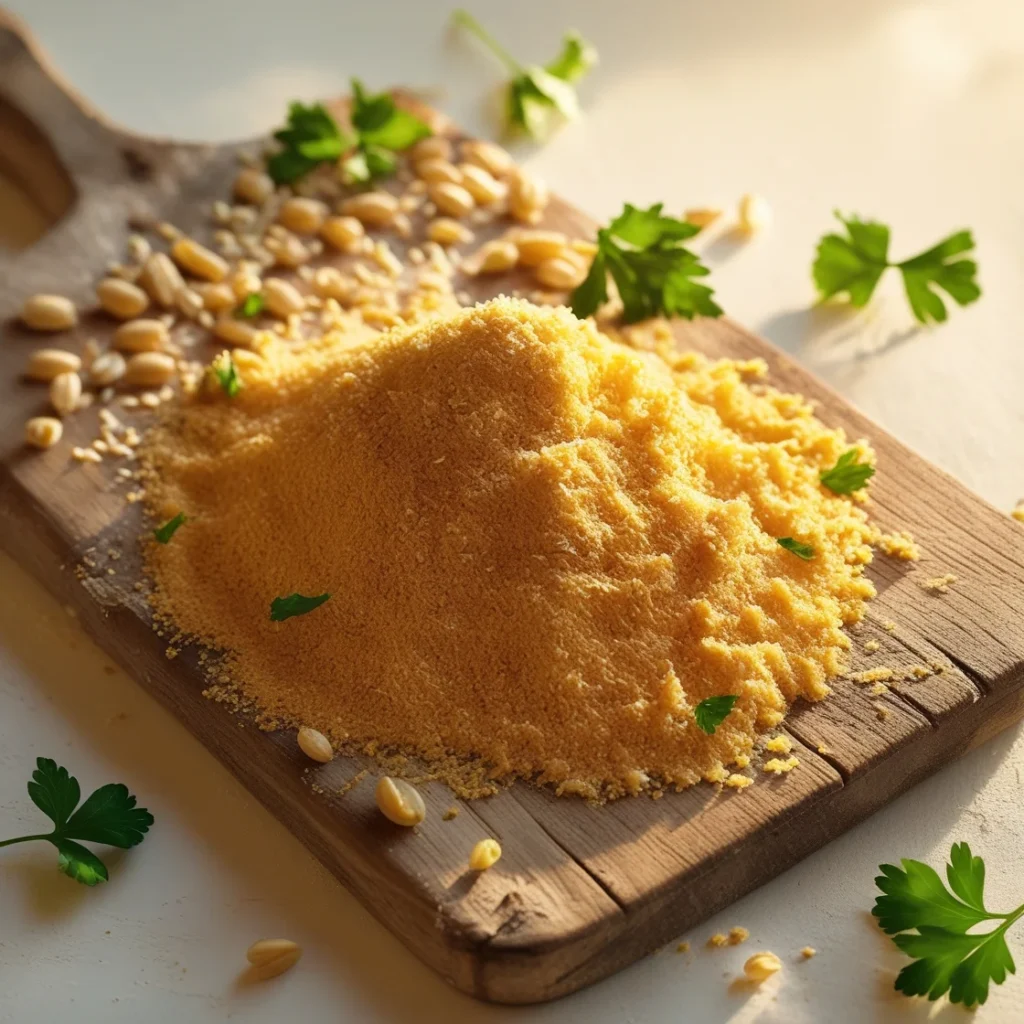Nutritional Yeast: Benefits, Uses, and Nutrition Facts
Nutritional Yeast: Benefits, Uses, and Nutrition Facts. Nutritional yeast used to be an obscure ingredient that you could only find in specialty shops, but that’s changing. It adds a cheesy, nutty flavor to recipes, And vegans have used nutritional yeast, also called “nooch,” for a long time. That said, you don’t have to be vegan to enjoy the flavor and nutritional benefits of the ingredient.

What is nutritional yeast, and what is it used for?
Nutritional yeast is grown to be a food product and inactivated (killed) in processing. Its scientific formulation is Saccharomyces cerevisiae, and it is similar to the strains of this yeast used for baking bread and brewing beer. Nutritional yeast is also known as savory yeast or nooch.
Some people add nutritional yeast to their food for the supposed health benefits, while others just add it for the flavor. You can use it to season food or make cheesy, plant-based sauces. But, like with other dietary supplements, you shouldn’t use it as a substitute for a healthy diet.
Nutritional Yeast Fast Facts
Nutritional Yeast: Benefits, Uses, and Nutrition Facts. Nutritional yeast is a seasoning that can be used in various dishes. It is yellow in color and available as flakes, granules, or a powder. It contains various nutrients, including folate, fiber, and vitamin B12.
There are two varieties of nutritional yeast—fortified and unfortified. Both are available in a flaky powder or granules and are found in most grocery stores. The differences in the varieties are:
- Fortified: Fortified: This type of nutritional yeast is the most common and contains synthetic vitamins added during manufacturing.
- Unfortified: Unfortified: This nutritional yeast type only contains vitamins and minerals produced by growing yeast cells.
KAL Nutritional Yeast Flakes, Fortified with B12, Folic Acid & Other B Vitamins, Unsweetened, Great Nutty Flavor, Vegan & Gluten Free, 60-Day Money Back Guarantee, Made in the USA, 34 Servings, 12oz.
Vitamin-Packed Protein: Enriched with B vitamins, KAL Nutritional Yeast Flakes provide 5g of protein
The Perfect Ingredient: Naturally low in fat & delicious in savory recipes, popcorn, shakes & more
Taste
Nutritional yeast contains flavorings added during production. The type of flavoring will depend on its production. Such flavors include meaty, kokumi (rich-tasting), umami (meaty or savory), and salty.
Masago: Nutritional Benefits and Delicious Recipes. Masago or smelt roe are the edible eggs of the capelin fish. They’re loaded with protein, nutrients, and vitamin B12. But people with high blood pressure or seafood allergies should be cautious when considering this ingredient. Fish roe are the fully ripened eggs of many types of fish, including sturgeon, salmon, and herring.
Nutritional yeast is also sometimes described as having a cheesy, nutty flavor because it has a similar flavor to cheese—umami, salty, rich, and fermented. But it does not quite taste like cheese, nor does it have the same texture.
Nutritional Yeast Nutrition Facts
The following nutritional yeast nutrition information is for 16 grams
- Calories: 60
- Fat: 0.5g
- Sodium: 30mg
- Carbohydrates: 5g
- Fiber: 3g
- Sugars: 0g
- Protein: 8g
- Thiamin (vitamin B1): 10mg
- Riboflavin (vitamin B2): 10mg
- Vitamin B6: 12mg
- Vitamin B12: 24mcg
Nutritional Yeast Health Benefits
In a small serving, nutritional yeast nutrition comes with many health benefits.
Reduces Risk of Anemia
When it comes to anemia, the first nutrient to come to mind is usually iron. However, inadequate folate or vitamin B12 also causes anemia. A common treatment for a vitamin B12 deficiency is injections, but large oral doses can also be effective.
Most brands of nutritional yeast are fortified with B12, providing more than 500% of the daily value per serving. Because B12 is water-soluble, it is unlikely to cause toxicity even when consumed in high doses. People who follow a plant-based or vegan diet often have limited sources of vitamin B12. Nutritional yeast can serve as a key source of this essential nutrient.
Types Of Nutritional Yeast
Nutritional yeast is produced by growing cerevisiae cells for several days on a sugar-rich medium like molasses. The yeast is further deactivated with heat, harvested, cleaned, dried, crumbled, and packed for sale.
Two common types of nutritional yeast include unfortified and fortified:
Unfortified: This type doesn’t contain any added nutrients. It only has the vitamins and minerals that are naturally produced by the yeast cells as they grow.
Fortified: This type includes synthetic vitamins added during the manufacturing process to uplift nutritional value. Also, the added vitamins are included in the ingredient list. This is the most common type used widely, and it delivers the maximum benefits.
Common Uses
Nutritional yeast can be used for a variety of culinary purposes:
- Vegan Cheese: It’s commonly used to create dairy-free cheese sauces, dips, and spreads.
- Soups and Stews: Stir into soups and stews for added richness and depth of flavour.
- Pasta and Pizza: Incorporate it into pasta dishes, pizza, or as a topping for baked potatoes.
- Baking: Use it in bread, muffins, or savory baked goods for added flavor and nutrition.
Nutritional Yeast Calories
One serving size (16g) of nutritional yeast equals 47 calories – this is quite low caloric level. The calorie content of the nutritional yeast is exactly the same as that of parmesan cheese. Cheddar cheese, however, is higher in calories: two tablespoons of cheddar cheese equal 56 calories while two tablespoons of nutritional yeast (or parmesan cheese) equal 40 calories. [3]
Even though nutritional yeast isn’t high in calories you shouldn’t overconsume it. Look carefully at the nutrition facts and at the serving size on the label. As any other superfood, make sure to consume nutritional yeast in moderate quantities to avoid any side effects
Nutritional Yeast Side Effects
Very rarely do some people have yeast intolerance; however, consuming a great amount of nutritional yeast can cause facial flushing due to the content of niacin (Vitamin B3). Apart from being a valuable source of essential trace elements, nutritional yeast also contains such amino acids as tyramine, which can provoke migraine attacks and trigger Crohn’s disease. If you are prone to the latter, we recommend consulting with your physician before making this product a part of your diet.







